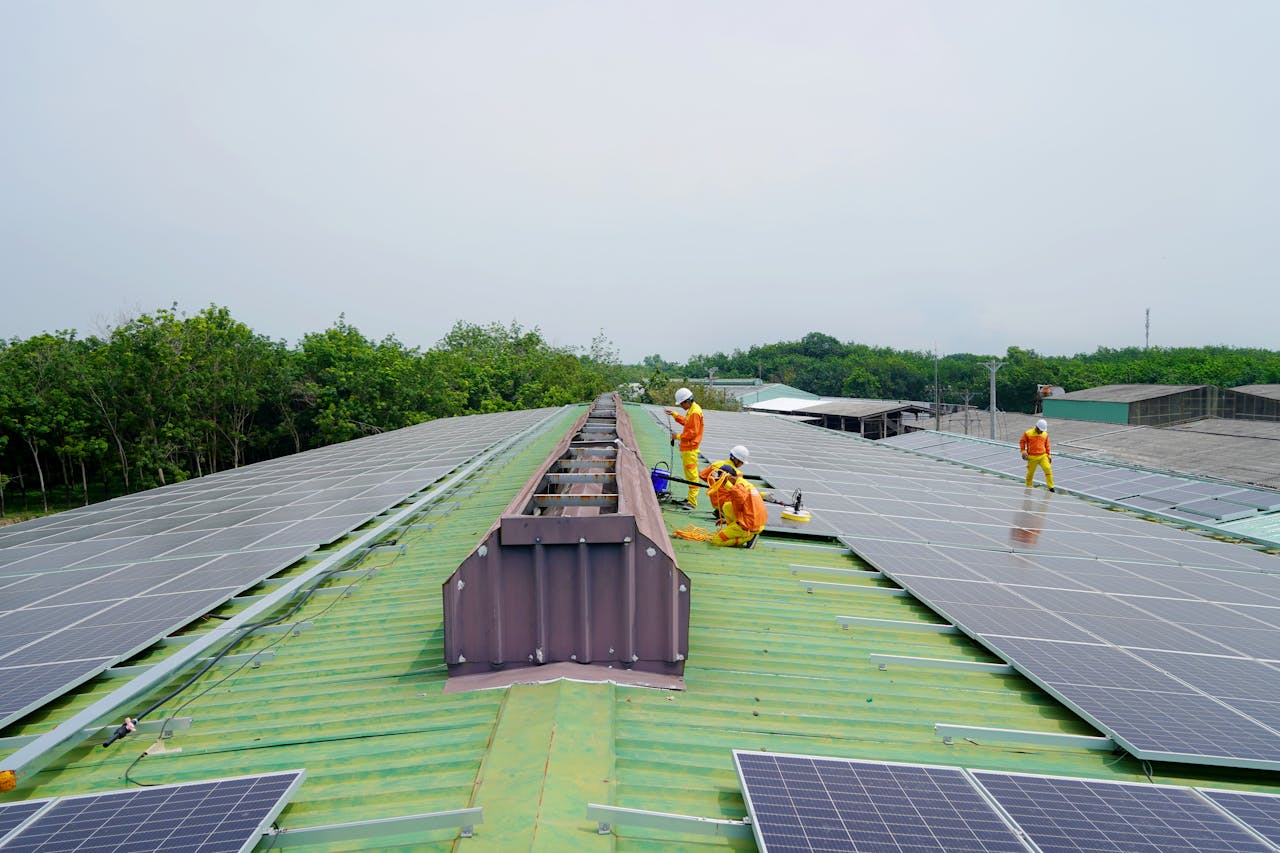From the heart of bustling London to the tranquil countryside of Wales, homes across the UK are going green. But, we’re not just talking about recycling and ditching plastic straws. We’re talking about green roofs. These aren’t roofs painted green, but roofs covered in vegetation. This eco-friendly trend is spreading across the country as homeowners seek ways to reduce their carbon footprint, enhance the environment, and most importantly, improve energy efficiency. But can a green roof really make a difference to your energy bills? The answer, as you might have guessed, is a resounding yes.
What is a Green Roof?
Before we delve into the specifics, let’s define what a green roof is. A green roof, also known as a living roof, is a roof of a building that is partially or completely covered with vegetation and a growing medium, planted over a waterproofing membrane.
Cela peut vous intéresser : How to assess the flood risk before purchasing a home in York?
In essence, it’s a garden on top of your house, which might sound a little outlandish, yet it’s a concept that’s been practiced in Scandinavia for centuries. Given the UK’s similar climate, it’s no surprise that green roofs have taken off here. It’s also why they’re an effective tool for improving energy efficiency.
How Do Green Roofs Improve Energy Efficiency?
Green roofs work in a number of ways to improve energy efficiency in your home. The presence of vegetation creates a layer of insulation, which keeps your home cooler in the summer and warmer in the winter. Let’s explore these features in more detail.
A lire aussi : How to find age-friendly home features for senior living in Norfolk?
Insulation and Temperature Regulation
The thick layer of soil and plants on a green roof acts as an insulating blanket, reducing the amount of heat that enters and leaves your home.
During the summer months, the vegetation absorbs heat, significantly reducing the temperature of the roof surface and the surrounding air. This natural cooling effect can drastically reduce your reliance on air conditioning, cutting down energy usage and reducing your carbon footprint.
Similarly, in winter, the insulating properties of a green roof reduce heat loss from your home, meaning you don’t need to crank up the heating as often. According to the National Building Specification of the UK, a green roof can reduce energy consumption for heating by 25%, making it a significant contributor to home energy efficiency.
Mitigation of the Urban Heat Island Effect
If you live in a city, you’re likely familiar with the urban heat island effect – the phenomenon where urban areas are significantly warmer than their rural surroundings due to human activities. Green roofs can help to mitigate this effect by reducing the amount of heat absorbed and emitted by buildings.
Photosynthesis, the process by which plants convert light into energy, also plays a part in reducing the urban heat island effect. Through photosynthesis, plants on green roofs absorb carbon dioxide and release oxygen, which helps to cool the surrounding air.
Other Benefits of Green Roofs
While improving energy efficiency is a significant benefit of green roofs, they offer several other advantages that make them an attractive option for homeowners.
Improvement of Air Quality
Green roofs have a positive impact on air quality. The vegetation acts as a natural filter, absorbing harmful pollutants and gases, such as carbon dioxide, and releasing oxygen. This not only helps to reduce greenhouse gas emissions but also creates cleaner, healthier air for you and your family to breathe.
Noise Reduction
Another benefit of green roofs is noise reduction. The layer of soil, plants, and trapped layers of air can reduce ambient noise by up to 40 decibels, according to research from the University of Sheffield. This can be a significant advantage if you live near a busy road or airport, or if you simply value peace and quiet.
Installing a Green Roof: Things You Should Know
Before you start planting an array of flora on your rooftop, there are a few things you should consider.
First, you need to ensure your roof is structurally sound and able to support the additional weight of a green roof. This includes the weight of the soil, plants, and any water they retain.
Second, you need to think about maintenance. While a green roof requires less upkeep than a traditional garden, it’s not completely maintenance-free. You’ll need to weed, water, and fertilize your roof garden regularly to keep it healthy and thriving.
Lastly, you need to consider the initial cost. Installing a green roof can be more expensive than a conventional roof. However, the long-term savings on energy bills and the added property value can offset these initial costs.
In conclusion, a green roof can undoubtedly improve the energy efficiency of your UK home. It’s an investment that not only benefits your wallet and increases your property value but also contributes positively to the environment.
Green Roofs vs. Other Sustainable Roofing Options
In the quest for sustainability, green roofs are not the only option available. Other environmentally friendly alternatives like solar panels and cool roofs are also gaining popularity. However, green roofs stand out due to their numerous benefits beyond energy efficiency.
Solar panels harness the power of the sun to generate electricity, effectively reducing your home’s reliance on non-renewable sources of energy, and subsequently lowering your energy bills. However, solar panels require a significant upfront investment and may not be suitable for all types of roofs or locations with minimal sunlight exposure.
On the other hand, cool roofs, characterised by their light-coloured or reflective roofing materials, aim to reduce heat absorption and maintain cooler indoor temperatures in hot climates. However, they may offer limited benefits in a UK setting given the temperate climate.
Green roofs, in contrast, offer both thermal insulation and temperature regulation irrespective of the season, making them suitable for the UK’s varying weather conditions. They’re also an excellent tool for enhancing local biodiversity, improving air quality, and reducing noise pollution.
The Future of Green Roofs in the UK
The future of green roofs in the UK looks promising. As more homeowners become aware of the benefits green roofs offer, from energy efficiency to improved air quality, their popularity is only set to increase.
Governmental bodies and local councils are also recognising the potential of green roofs in mitigating climate change and improving urban living conditions. Several cities, including London, have already incorporated green roofs in their planning policies. This trend is likely to continue, with more stringent regulations expected to encourage the use of sustainable roofing.
With advancements in technology, we might also witness the development of hybrid systems that combine the benefits of green roofs with other renewable energy solutions, like solar panels. Such combinations could offer an even more effective approach to energy conservation.
Conclusion: Green Roofs – An Investment Worth Making
To conclude, green roofs present a viable solution to achieving energy efficiency in your UK home. By reducing energy consumption for both heating and cooling, green roofs can bring about considerable savings on your energy bills.
Beyond the financial benefits, green roofs contribute to a healthier and more sustainable living environment by improving air quality and mitigating the urban heat island effect. They also provide a tranquil green space that can enhance your property’s aesthetic appeal and increase its value.
While the initial costs associated with installing a green roof may be higher than conventional roofing materials, the long-term benefits make it a worthwhile investment.
So, if you’re considering ways to make your home more energy efficient, a green roof is definitely an option to consider. With careful planning and proper maintenance, you can transform your roof into a vibrant, living ecosystem that benefits your home, your wallet, and the planet.






